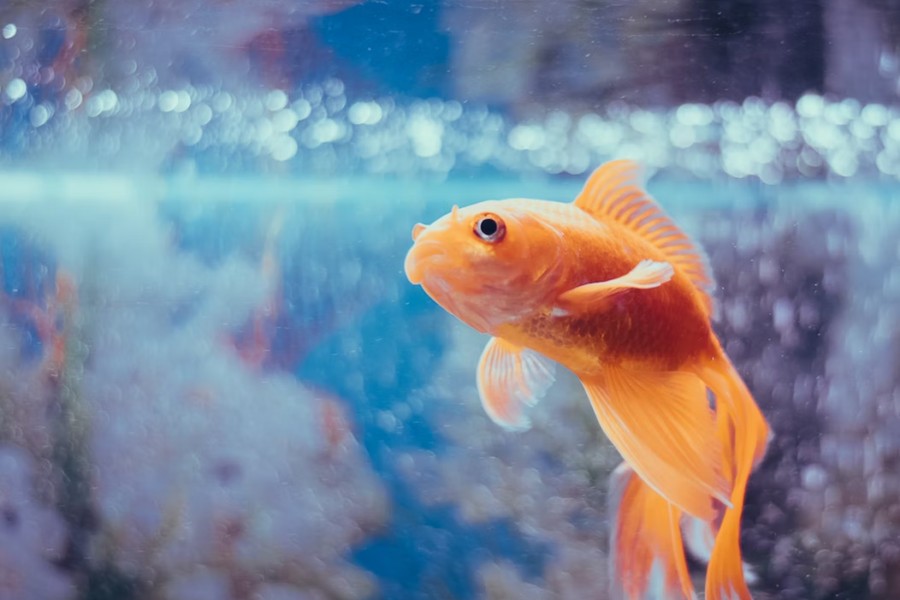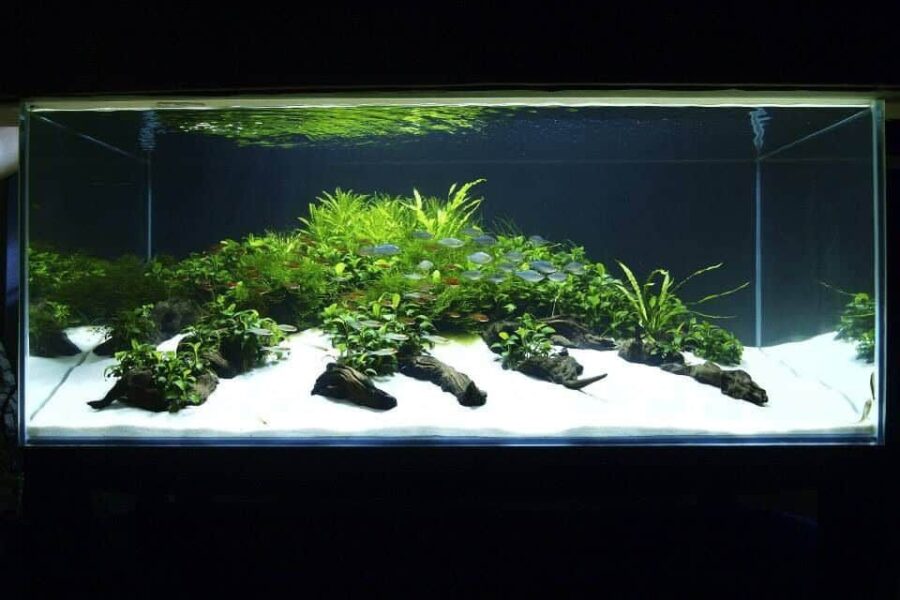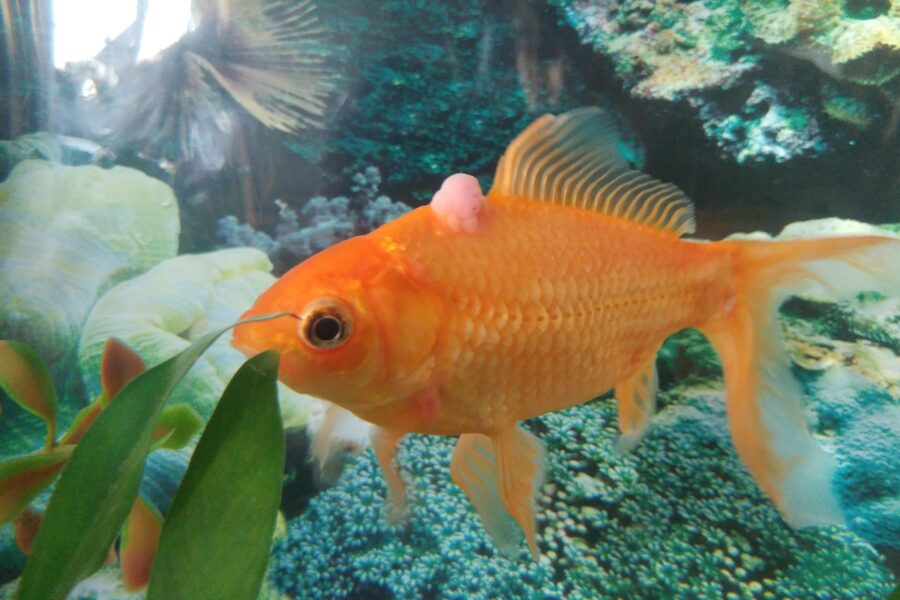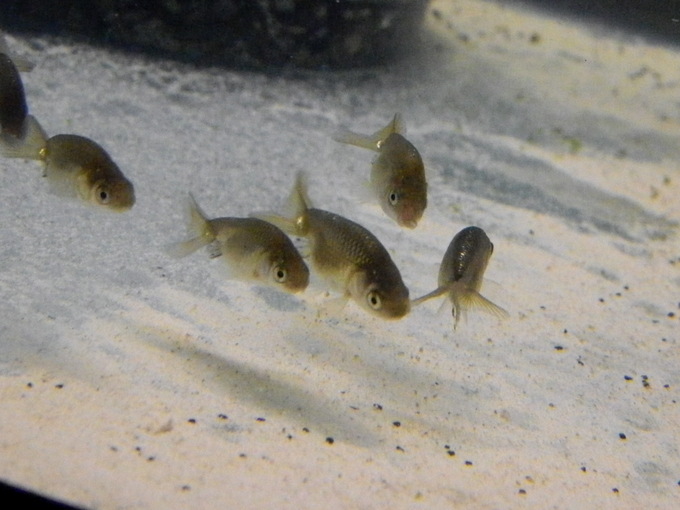
Peering into the world of aquariums, substrates often remain under water and underappreciated. From sand to stone or gravel, these unseen champions play huge roles. Introducing, you to the methodical madness is crucial. We delve into their variety and vital functions in breathtaking aquatic environments.
Now, imagine hosting a goldfish in your aquarium, specifically the fry (baby) goldfish. They seem cute, but they’re also fragile, carrying unique needs. To help, we’ll unravel the mysterious life cycle, exploring their special needs and how that interacts with our unsung heroes – the substrates!
Understanding Substrates
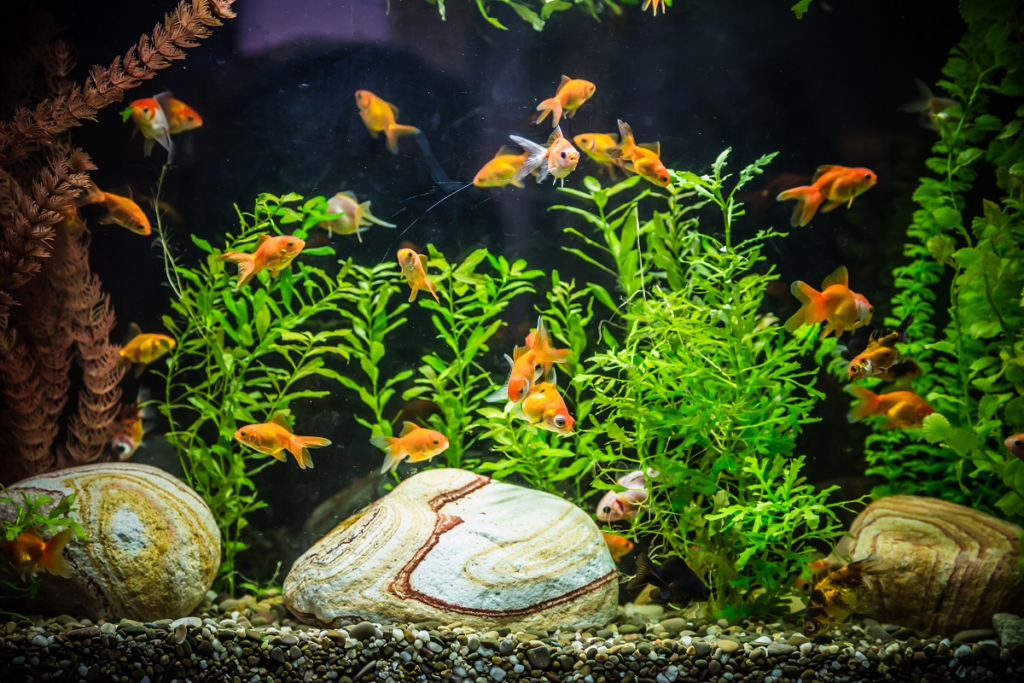
Before we deep dive into the world of goldfish gulpers and golden gliders, let’s get our hands wet first. It’s time to make sense of substrates.
What’s a Substrate Anyway?
Substrate, my dear aqua-adventurers, is the fancy word for the stuff sloshing around at the bottom of your fishy friend’s tank. Think of it as a groovy aquatic carpet. But unlike that 70’s shag that’s been haunting your basement, this carpet is a must-have.
The Variety Pack of Substrates
So, what choices can you make when it comes to picking a plush pad for your piscine pal? There’s gravel, sporting rocks from teensy-tiny to ‘oh my!’ sizes. Cozy aquarium sand is also a top-notch choice. Add to that specialized plant soils and the ever-exotic crushed corals, and the world – the underwater world – is your oyster.
Substrates: The Unsung Hero
Beyond offering a stylish look, substrates have a marvelous magic of their own. They’re the underwater world’s unsung heroes, busy aiding bacteria growth that breaks down fishy waste. Plus, substrates serve as an anchor, holding down plants that your fish depend on for cover and comfort.
By now, you’re probably saying to yourself, “Seriously! Who knew substrates were so snazzy?” With our newfound knowledge, let’s swim over to discussing our finned friends themselves in our next section, ‘Goldfish Basics’. Remember to keep your snorkel on. This is about to get real fishy.
Goldfish Basics

So, you’ve got this tiny aquatic wonder, a fry goldfish, swimming around in your tank. That’s awesome! But what now? Before we delve into the thrilling world of substrates (a cliffhanger, I know), let’s recap the fundamentals of Goldfish 101.
Life Cycle of Goldfish
First off, everything in life has a cycle, even your tires. But goldfish, they’ve got their unique life cycle. Hatched from eggs, these tiny tots start their journey as ‘fry’. Gradually, they become juveniles, teenagers in the fishy world. Eventually, they grow into adults. It’s kind of like ‘Finding Nemo’. Just less dramatic and without all that dangerous ocean swimming stuff.
Special Needs of Fry Goldfish
Just like how puppies have different needs than full-grown dogs, fry goldfish have special needs too. They require more protein, love to explore (bottom dwellers, remember?), and need softer water than their adult versions. They’re like children in a fish tank, every tiny speck is a new adventure or a potential meal. These little ones are also more fragile, so be gentle, patient, and attentive.
Isn’t this fascinating? Goldfish fry are not just mini versions of the adults, they have their own unique requirements! And a significant part of these requirements is the type of tank they live in. If you’re keen to discover the best homes for these tiny swimmers, check out our article on Best Tanks for Baby Goldfish.
The environment they’re in, including the substrate, plays a crucial role in their growth and well-being. You’ll uncover more about the importance of substrate in the next section of our “fish tails”. And while you’re diving into the world of baby goldfish, don’t forget to also explore our guides on 4 Best Foods for Baby Goldfish and How to Take Care of Baby Goldfish.
Keep your fins on…I mean, your hats on!
The Role of Substrates for Fry Goldfish

Let’s dive deeper into the watery wonderland that is your goldfish tank, specifically at the bottom – the substrates. They’re more than just a flashy aquarium floor material. They have a starring role in the life of your fry goldfish.
Benefits of Substrates for Fry Goldfish
You see, substrates can be a magical playground for fry. They get to rummage around, searching for microorganisms to snack on – it’s a delicious fry treasure hunt! Plus, substrates foster beneficial bacteria; these tiny custodians help in breaking down waste. Without them, the tank’s water quality could suffer, meaning your fry could suffer, and no one wants that.
Potential Risks of Substrates
But hold on, it’s not all glittery fish scales and joyous jaunts. Substrates pose a few risks. Small, sharp substrates can injure your goldfish fry, turning their happy home into a danger zone. Not to mention, uneaten food and waste may hide in submarine-ish crevices, potentially poisoning your precious little fish.
As we move on, we’ll look at how to play it safe and choose the perfect substrate for your golden brood. Substrate shopping can be as exciting as an underwater version of ‘House Hunters.’ Wait with bated breath – or better still, with gilled breath!
Choosing A Substrate for Your Fry Goldfish
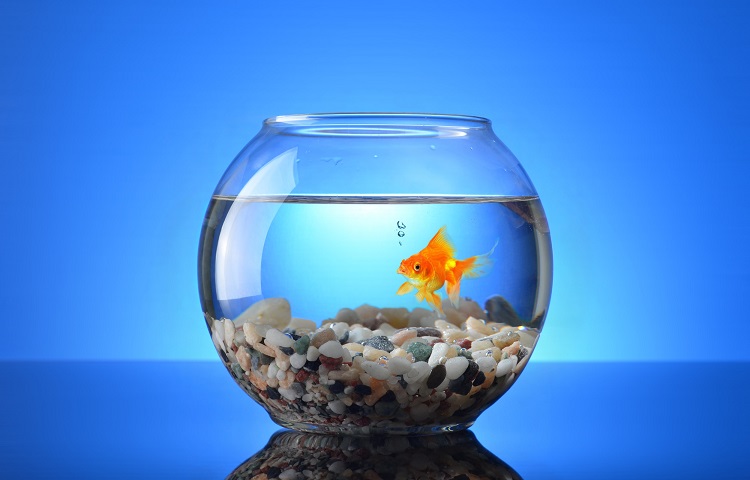
Let’s dive straight into one of the most essential parts of your little fry’s life: choosing the right substrate. Just like picking the perfect birthday outfit, there are few factors to consider.
Factors to Consider When Choosing a Substrate
So, what takes to bag the perfect substrate for your fry goldfish? Size, texture, and durability are some of the crucial factors to consider. The substrate should be small enough for a fry to sift through, but not so small that they can accidentally swallow it! The texture is significant too. You want it smooth, so as not to scratch those adorable little goldfish bellies. Durability is equally essential. Substrates should withstand the goldfish’s constant foraging without easily breaking down.
You’ve seen the factors, let’s get the shopping for ‘fishy-friendly’ substrates started!
Best Substrates for Fry Goldfish
Pea-sized gravel is the typical ‘home décor’ for the aquarium and a good pick for the fry. Smooth and adequately sized, this substrate allows fry to forage without the risk of swallowing or getting hurt. Sand can also work. It’s super soft and makes your little fry’s goldfish feel like they’re at their own private beach!
However, be careful with the sand. It tends to compact, which could lead to a lack of oxygen in some areas. Combined with goldfish poop, it can create a mess. Thus, make it a routine to stir it up frequently.
If you’re looking for the best type of gravel or sand for your goldfish tank, check out our articles on 5 Best Gravels for Goldfish Tanks, 5 Best Substrates for Goldfish Tanks of All Sizes, and 5 Best Sands for Goldfish Tanks.
And voila! You are a step ahead in making your goldfish house feel like home!
Next, I will guide you on how to keep these substrates tidy. Remember, a clean home is a happy home—even for your fry goldfish!
Maintaining Substrates in a Fry Goldfish Aquarium

Let’s paddle into the gritty world of substrate maintenance. Picture this like a Broadway musical, a lot of under-appreciated behind-the-scenes work that keeps the whole show on track.
Cleaning Process of Substrates
Before casting spotlights on your shimmering chip off the old goldfish fry, we need to clear the stage first. Cleaning substrate is like giving your fish tank a fresh breath of life. Fish poop, algae, and uneaten food can build up over time. To keep the environment clean and healthy for your fry, these need to be scooped out.
If you’re looking to level up your cleaning game, our Guide to Keeping Goldfish Substrates Clean and Healthy has got you covered with all the details you’d need.
Live plants can be a fantastic help, as they naturally absorb harmful substances from the water. But, caution is the key—too much thorough cleaning can harm beneficial bacteria. These microbes are our unsung superheroes—invisible but invaluable. Just ensure there’s a balance and not an overpopulation.
When and How to Replace Substrates
Every so often, the stage must be completely revamped. After some time, years perhaps, substrates might need total replacement. It’s like overusing a magic trick—after some time, the mystery is gone and it can become unappealing or even harmful.
While doing so, avoid making the common mistake of replacing all of it at once. This can disrupt the balance of your aquarium and stress the fish. Instead, gradually replace your substrate, segment by segment, over a period of time. Your fishy friends will be grateful.
By now, you must be wondering—”Is there an easier way?” On that note, let’s dive into our next section, where we’ll explore an intriguing alternative to substrates that some aquarists swear by: the bare-bottom approach. Get ready to bare it all!
Alternative Options to Substrate
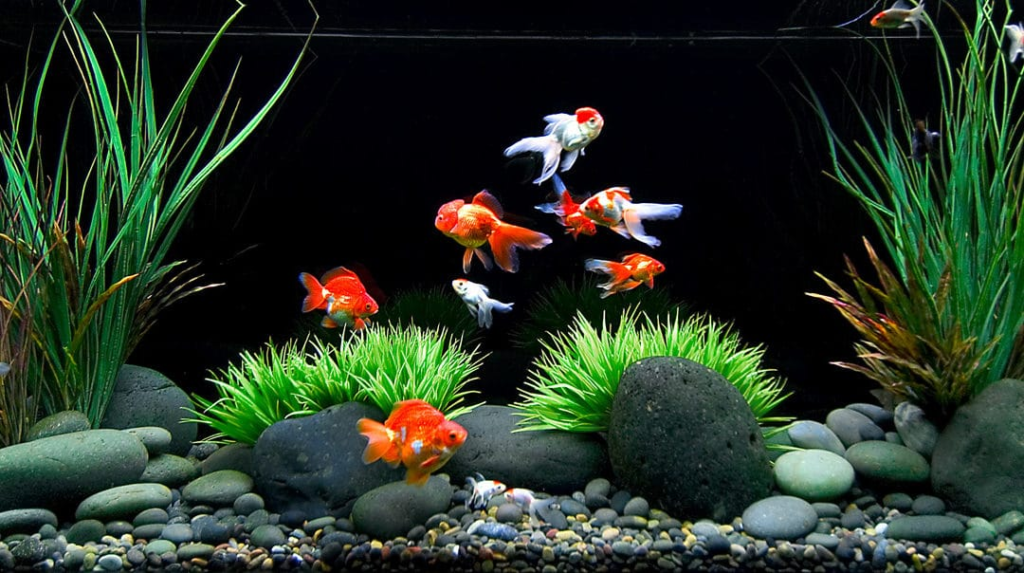
So, you’re on board with the substrate method, but you’re curious about the road not taken. Or you’re a rebel at heart and love bucking the trends. For you daredevils out there, let’s look at the unchartered lands of going substrate-free. Dive in, shall we?
The Bare-Bottom Tank Approach
Making your fry goldfish’s tank a bottomless wonder can seem like a radical concept. It’s like Batman without his Batmobile or mac without cheese, but it’s not as mind-boggling as it sounds. A bare-bottom tank simply means your tank is substrate-free, just water, and your beloved goldfish swimming freely. But why would anyone do this, you ask?
Well, bare-bottom tanks are super easy to keep clean. Think about it; no gravel or sand is trapping leftover food or poop. Say goodbye to those pesky deep cleaning sessions! Also, some aquarists believe that bare-bottom tanks are less stressful for the fry as there’s nothing to nibble on and choke. The lack of substrate also helps spot any health issues early by observing the poop. Now, that’s a plus for every concerned parent, right?
But hold on, this sounds too good to be true. Before you start pouring all your substrate away, let’s balance things out with some non-substrate reality checks.
Pros and Cons of Not Using Substrates
The bare-bottom route isn’t all rainbows and roses. Sure, you get to keep your tank ultra-clean very easily, but remember, substrate also plays a big role in housing beneficial bacteria. It also gives your tank a more natural look, something your fry might appreciate.
On the plus side, going bare-bottom gets rid of the risk of choking and digesting unhealthy bits for your fry. So, it’s all pretty much about weighing the pros and cons, and what clicks for your little swimmy family.
Now that you’ve got the dirt on going substrate-less, you’re all set to make a well-informed decision about your fry goldfish’s homely pad. And whose to say you can’t experiment and find that sweet spot somewhere in the middle? After all, being a fish parent is all about finding that perfect swim-lane!
To Sum Up
In crossing the finish line of this article, it’s pivotal to note that substrates aren’t just decorative elements for your aquarium, but serve essential roles especially for your fry goldfish. The benefits they offer, such as providing refuge and contributing to your pet fish’s ecosystem, notwithstanding potentially existent risks, make substrates a worthy addition.
Choosing the right one requires understanding your fry goldfish’s requirements and optimal environment factors. Regular maintenance keeps substrates effective while the bare-bottom tank approach can be a consideration for those who want to avoid risks or maintenance involved in usage of substrates. So, whether you’re a goldfish enthusiast or newbie, making an informed decision about substrates is a valuable contribution to your pet fish’s well-being.
Frequently Asked Questions (FAQ)
Question: What is a substrate in an aquarium context?
Answer: A substrate is a layer of material at the bottom of an aquarium. It can vary from sand to gravel, soil, or clay pebbles, providing a natural base for plants and a hiding place for fish.
Question: Do fry goldfish need a substrate?
Answer: While not obligatory, substrates can be beneficial for fry goldfish as they harbor beneficial bacteria, aid in waste breakdown, and provide a grazing area for fry goldfish.
Question: What type of substrate is best for fry goldfish?
Answer: Smooth, fine-grained substrates like sand or fine gravel are good choices as they minimize the chance of injuring the fry and facilitate the growth of beneficial bacteria.
Question: How often do I need to clean the substrate in my fry goldfish tank?
Answer: Frequency can vary depending on the type of substrate and tank conditions, but generally, a cleaning once every two weeks is common.
Question: Is it possible to maintain a fry goldfish tank without a substrate?
Answer: Yes, it’s known as the bare-bottom tank approach. It’s easier to clean but doesn’t offer the benefits of a natural environment like substrates do.
Question: When should I replace the substrate in my fry goldfish tank?
Answer: Unless it’s causing problems, substrate rarely needs to be completely replaced. It’s usually enough to just clean it regularly.

